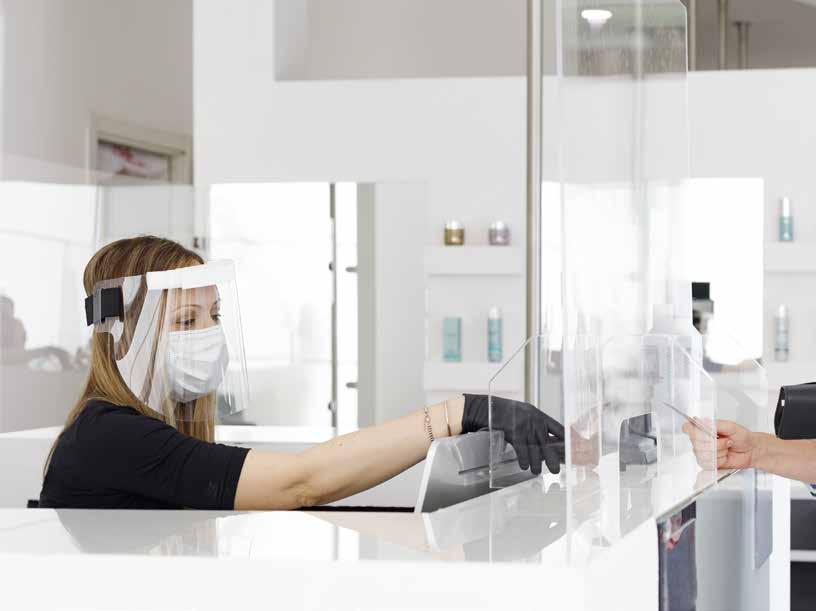
4 minute read
Getting Ahead of the Curve
from CHF Summer 2020
by MediaEdge
Rural Ontario hospital puts four-pillar plan in place to keep patients, staff and physicians safe
By Dave Millan
Advertisement
COVID-19 evolved from an epidemic to a pandemic in a few s h o r t w e e k s , i n c r e a s i n g demands on the facilities team at Brockville General Hospital (BGH). L o c a t e d b e t w e e n O t t a w a a n d Kingston, Ont., BGH, as well as its partner agencies in the Thousand Islands region, faced many of the same challenges as larger hospitals and additional ones presented by a primarily older and rural population.
The scientific community and various levels of government researched how the virus affects the population, which resulted in new protocols being developed and set forth. This has placed increased demands on the hospital’s facilities department. For instance, in-hospital care for COVID-19 patients is now required. To satisfy this need, patient flow had to be adjusted to ensure negative pressure rooms are available to the clinical teams.
Leading up to the state of emergency declared by the Ontario government in March, BGH’s senior leadership established an incident command structure. This allowed for formalized and standardized planning of operations and communication during the pandemic.

The subsequent response within the facilities department was rapid. The team reached out to their peers and consulted with the hospital’s in-house infection prevention and control (IPAC) department and health and safety groups to establish new and evolving standards for the organization. This provided a framework for facilities staff to prioritize their response to COVID-19. It includes four pillars to keep patients, staff and physicians safe during the pandemic: a central source of information; set of communication protocols; ensuring a safe working environment; and making adjustments based on clinical needs.
CENTRALIZING INFORMATION
It was determined early on that information was flowing to the facilities department from multiple sources and some of it was contradictory or confusing to staff. The result was reduced productivity. To combat this, the team decided only one source would disseminate information, allowing for clear direction and response. The director of facilities and infrastructure was selected as the point of contact, mirroring BGH’s corporate communications strategy whereby all information is disseminated by the hospital’s marketing and communications department.
COMMUNICATION PROTOCOLS
To mitigate challenges resulting from unclear operational communications, BGH fully implemented the incident management system within all protocols for emergency response. Internally, the facilities COVID-19 response plan has provided a start-of-shift toolbox briefing for the team. This system has mitigated any confusion staff may be exposed to while in the field.
A SAFE WORK ENVIRONMENT
As the team received multiple service requests, a new validated, systematic process was required in order to meet increased workload demands. A risk assessment process was implemented that clearly established hospital worker health and safety as a priority. A hierarchy of controls has been utilized as the standard to determine which activities and work orders are a priority based upon the following control measures: elimination; substitution, engineering controls; administration controls; and personal protective equipment (PPE).
An example is the active COVID-19 screening program. Following the standard set out by the provincial government, the number of points of entry into the hospital was reduced. Screening was implemented, with designated staff donning and doffing PPE. Staff reported safety concerns with this process.
To create a better solution, facilities staff gathered information from internal stakeholders and determined a physical barrier would be beneficial at the screening desk, as well as support from a licensed security guard. Collaboration between the two groups continually enhanced the evolving screening process, with feedback resulting in the addition of a three-sided Plexiglas screen to the COVID-19 screening desk, a microphone for improved communication and an opening to allow for documents to be passed between screeners and clients.
MAKING ADJUSTMENTS
It was key the facilities department ensure staff and physicians were aware that approximate timelines to complete work orders were subject to change, based on need. The surgical services program serves as an example. A large project was required to be completed in a short period for clinically vital work. In order to maintain surgical activity, the facilities team engaged several stakeholders (in-house resources from occupational health and safety and IPAC departments, and the hospital’s air balancing contractor) to create a negative pressure environment in the operating room. This would allow designated medical procedures to be completed, as per government issued protocols.
Overall, the facilities department has been able to adjust and prioritize the demands of stakeholders during the pandemic. The keys to a successful response to this crisis is clear, consistent communication and engagement from the team.







